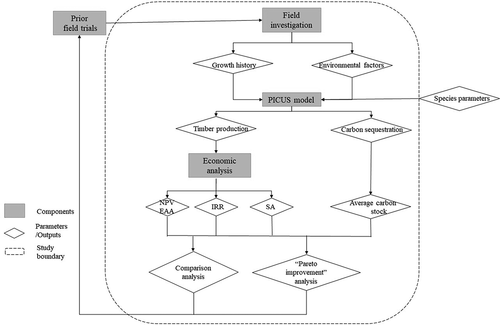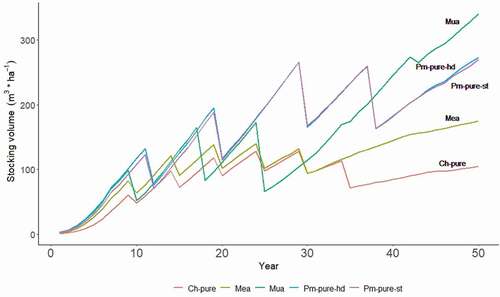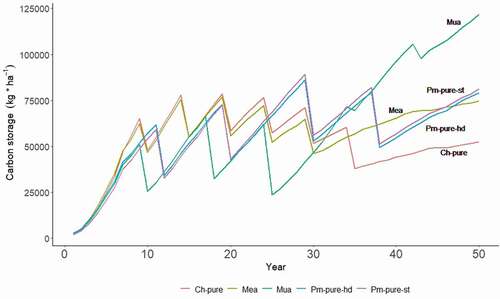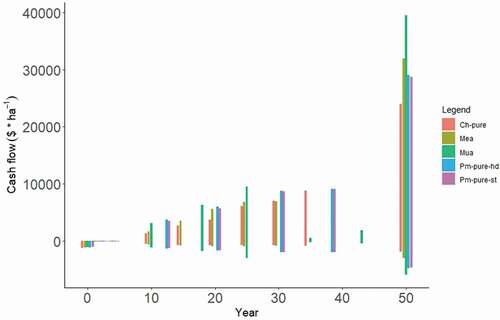Figures & data
Table 1. Details of the five management alternatives
Table 2. Net present value (NPV), equivalent annual annuity (EAA) and internal rate of return (IRR) for all alternatives
Figure 5. Sensitivity analysis by option – NPV with: (a) changing harvesting cost; (b) changing timber price; and (c) changing discount rate
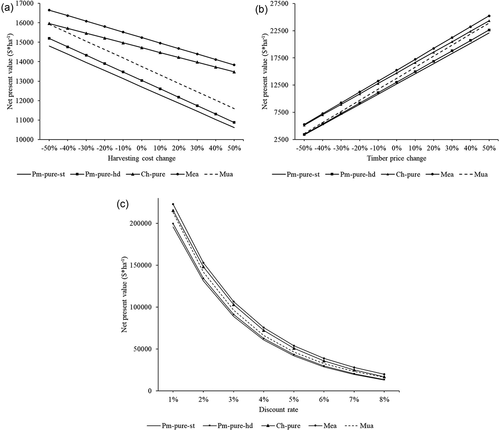
Figure 6. Economic benefit and carbon sequestration of all silvicultural options
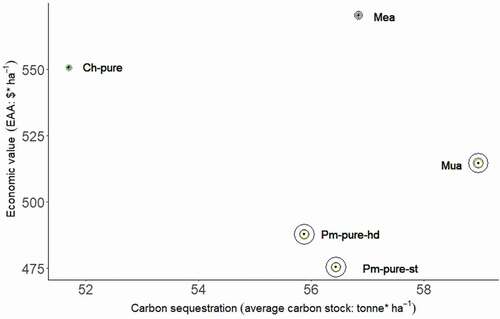
Table 3. The carbon values and the combined values by scenario

